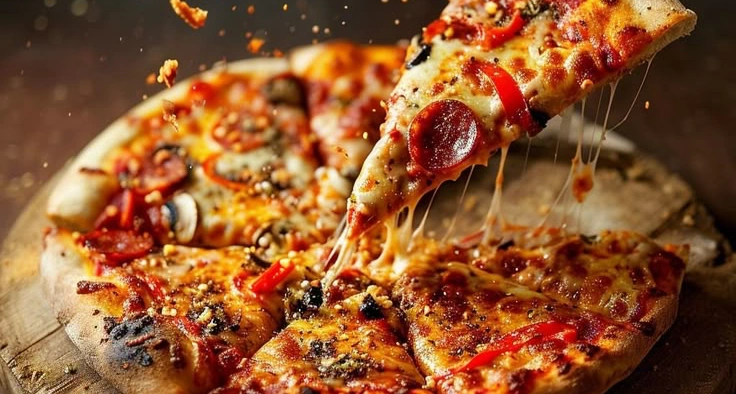Italian Cuisine: History and Heritage
A Brief History
The roots of Italian cuisine trace back to Ancient Rome, where people commonly ate bread, olive oil, cheese, fruits, vegetables, and wine. After the fall of the Roman Empire, Italy's regions developed distinct food traditions based on geography, climate, and neighboring influences.
In the Middle Ages, monasteries played a key role in preserving culinary knowledge, while wealthy families employed chefs who created refined dishes. During the Renaissance, cuisine became more artistic and sophisticated, especially in the courts of Florence, Milan, and Naples.
The discovery of the Americas had a major impact: tomatoes, corn, potatoes, and cocoa were introduced — all of which are now staples in Italian cooking.
In the 19th and 20th centuries, with the unification of Italy and waves of immigration, Italian cuisine spread across the globe. Despite its popularity and evolution, it has remained true to its roots — emphasizing fresh ingredients, seasonality, and simplicity.

The roots of Italian cuisine run deep — back to Ancient Rome and beyond — telling a story of history, geography, migration, and cultural fusion. What is today one of the most celebrated and influential food traditions in the world began as a humble yet resourceful way of life, based on what the land offered, shaped by centuries of change.
In Ancient Rome, people commonly ate simple yet nourishing foods: bread, olive oil, cheese, legumes, fruits, vegetables, wine, and occasionally fish or meat. Olive oil was already a culinary cornerstone, and herbs like basil, mint, and oregano were widely used for flavor. Meals often included ingredients we still associate with Italy today — such as grains and dairy — but without New World additions like tomatoes or corn, which hadn’t yet reached Europe.
Following the fall of the Roman Empire in the 5th century, Italy became fragmented into independent kingdoms and regions. Each developed its own distinct culinary traditions, influenced by local climate, terrain, and neighboring cultures. Coastal regions relied on fish and seafood, while inland areas focused on cured meats and cheeses. In the north, butter and rice were more common, while the south leaned toward olive oil and pasta made from durum wheat.
During the Middle Ages, food was deeply tied to social class. Monasteries played a crucial role in preserving agricultural and culinary knowledge, maintaining vineyards, baking bread, and cultivating herbs and vegetables. Meanwhile, wealthy noble families employed chefs who created elaborate meals that reflected status and power. Spices like cinnamon, cloves, and nutmeg — introduced via trade with the East — began to appear in aristocratic kitchens.
The Renaissance, especially in cultural centers like Florence, Milan, and Naples, brought a heightened appreciation for food as an art form. Cookbooks were written, banquets became theatrical, and culinary aesthetics gained importance. The noble courts of Italy became testing grounds for new techniques and ingredients, setting the stage for modern gourmet cuisine.
A pivotal moment came with the discovery of the Americas in the late 15th century, which ushered in a wave of new ingredients that would forever change Italian cooking. Tomatoes, corn, potatoes, bell peppers, chili, beans, and cocoawere introduced. Initially met with skepticism — tomatoes were once thought to be poisonous — many of these ingredients eventually became cornerstones of iconic Italian dishes. Imagine pizza without tomato sauce or polenta without corn — unthinkable today, yet relatively modern in origin.
In the 19th and 20th centuries, Italy underwent massive political and social transformations. The unification of Italy in 1861 helped establish a national identity, with food as a central element. The waves of Italian emigration to North and South America, Australia, and other parts of Europe helped spread Italian cuisine worldwide. Immigrants brought their recipes, adapted them to local ingredients, and shared the flavors of their homeland — contributing to Italian food becoming a global phenomenon.
Today, dishes like spaghetti, risotto, lasagna, gnocchi, tiramisu, and gelato are enjoyed on every continent. Yet despite global popularity and regional variations, Italian cuisine has remained remarkably faithful to its core values:
- Fresh, seasonal ingredients
- Simplicity and balance over complexity
- A strong sense of regional identity and family tradition
Italian cooking is not about fancy techniques or exotic ingredients — it’s about celebrating what’s local, respecting the product, and finding beauty in simplicity. Whether it’s a farmer’s humble minestrone or a chef’s refined ravioli, Italian cuisine is always a reflection of the land, the season, and the soul.
Italian cuisine is not just a style of cooking — it is a living history, shaped by conquests, trade, discovery, and the rhythms of everyday life. Its flavors tell the story of a people who cherish tradition while embracing innovation — and who believe that a well-prepared meal is one of life’s greatest joys.

Close